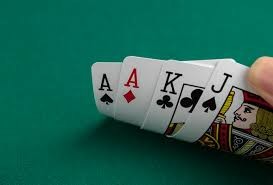 You’ve no doubt heard of popular poker format Texas Hold’em, but have you heard of Omaha Hold’em? If not, you are about to. This has become a popular form of poker and holds many similarities to the Texas equivalent that most of us know so well. Like so many games that are now popular today, there is no real agreed-upon timeline as to when Omaha became a game – it’s been around for a long time now, though.
You’ve no doubt heard of popular poker format Texas Hold’em, but have you heard of Omaha Hold’em? If not, you are about to. This has become a popular form of poker and holds many similarities to the Texas equivalent that most of us know so well. Like so many games that are now popular today, there is no real agreed-upon timeline as to when Omaha became a game – it’s been around for a long time now, though.
It was brought into the Las Vegas scene by Bill Boyd, who plated it alongside Robert Turner.
The Rules of the Game
At first, the rules of the game can seem a little weird.
Like normal poker, you are dealt a set of four cards and you must make-up your best hand using two cards, plus three of the five cards on the table. By using a 52-card deck, you need to make up the best card combination that you can with two of the cards you have paired up with three of the cards that come down on the community card collection.
The rules have changed over the years somewhat, though, as classic Omaha would have involved two hole cards and you had to use that hand to make up a combination of the cards. Indeed, the main way to determine a game of Omaha is if you are forced to use two hole cards. So, remember that this plays quite similar to the Texas equivalent, with a few small changes in how it works.
So long as you get used to the nature of the game, though, this 2-10 player form of poker is very popular. If you like your games to be more strategy than luck based, then Omaha makes a fine place for you to start off playing.

 As arguably the most common form of poker played today, Texas Hold ‘em is among the biggest casino games in the world today. It’s easily among the most popular games in the world, and is played by everyone from a pair of friends at home to a professional casino setting. Even that famous painting of the dogs are playing poker!
As arguably the most common form of poker played today, Texas Hold ‘em is among the biggest casino games in the world today. It’s easily among the most popular games in the world, and is played by everyone from a pair of friends at home to a professional casino setting. Even that famous painting of the dogs are playing poker! Few crazes in the world are quite as hard to understand outside of the home culture that spawned it as Pachinko. You might have heard the term but have no idea what it actually is. The simplest way to describe a pachinko machine would be a ‘Japanese slot machine’ but that does not do the actual fun and madness of the game any justice.
Few crazes in the world are quite as hard to understand outside of the home culture that spawned it as Pachinko. You might have heard the term but have no idea what it actually is. The simplest way to describe a pachinko machine would be a ‘Japanese slot machine’ but that does not do the actual fun and madness of the game any justice.